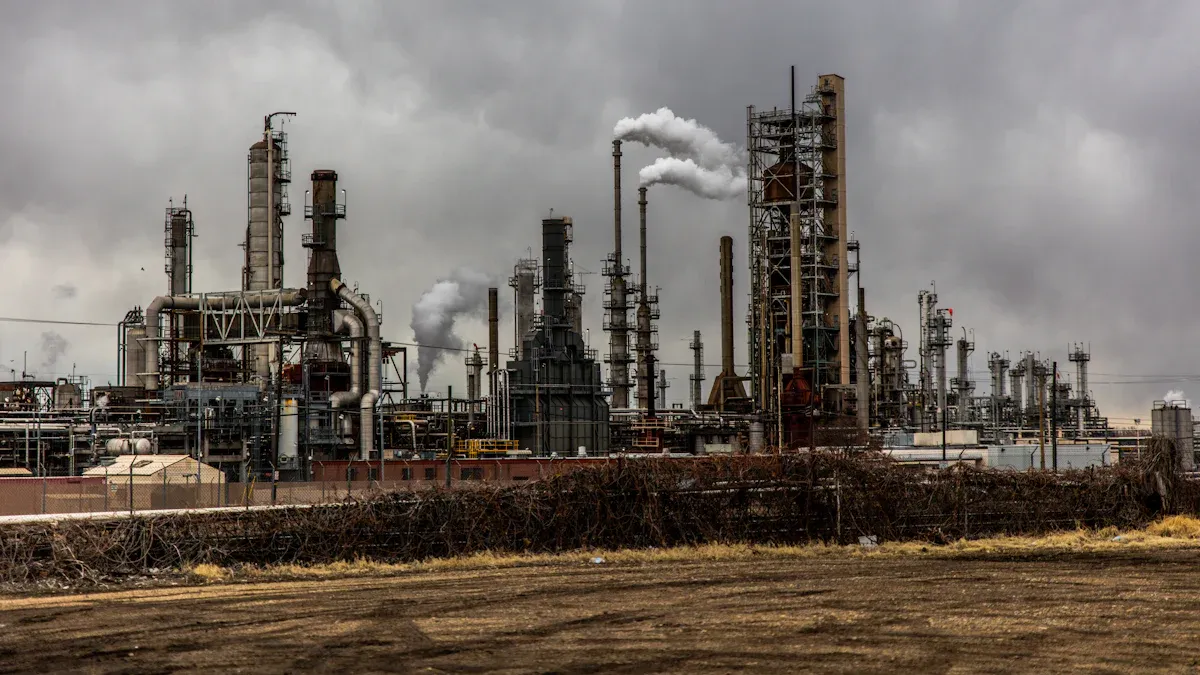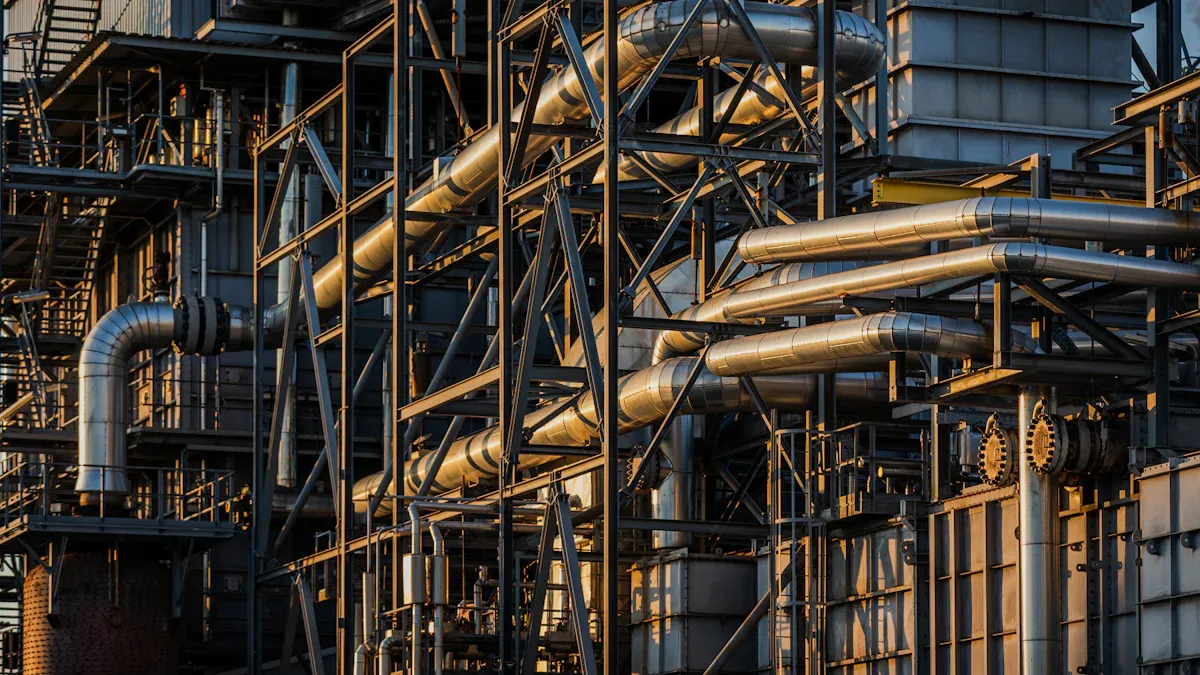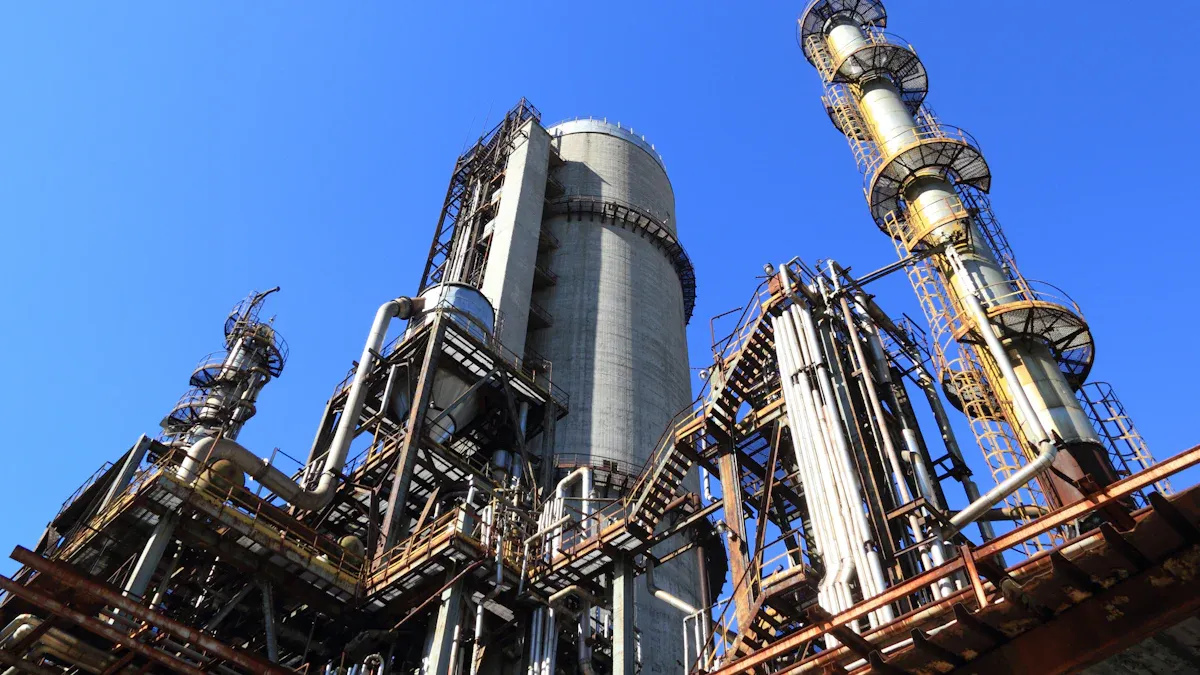When you face unexpected problems with your Sulfur Recovery Catalyst, you need to act fast. Look for unusual symptoms that do not seem obvious at first. Use new tools and smart methods to find the cause quickly. Taking these steps helps you keep your process running smoothly and improves your results.
Key Takeaways
- Monitor your sulfur recovery catalyst closely for common symptoms like temperature changes and decreased activity. Early detection can prevent major failures.
- Utilize portable analyzers and sensors for real-time data. These tools help you identify issues quickly, allowing for timely interventions.
- Review historical process data regularly. Analyzing trends can reveal hidden problems and help you maintain optimal catalyst performance.
- Engage with maintenance and operations teams. Their insights can uncover issues you might overlook, leading to faster problem resolution.
- Document your troubleshooting steps and share lessons learned. This practice builds a stronger team and improves future troubleshooting efforts.
Identify Sulfur Recovery Catalyst Symptoms and Unusual Signs
Recognizing Common Performance Issues
You can spot many problems with your Sulfur Recovery Catalyst by watching for common symptoms. Operators often notice changes in temperature, activity, or flow. These changes can signal trouble before a failure happens. The table below shows some of the most reported symptoms and performance issues:
Symptom Description Temperature rise across the bed Can be abrupt if overheating is severe. Decreased catalyst activity Can lessen over time, abrupt if overheating. Channelling in thermocouples May be observed during malfunction. Performance Issue Description Solids Contamination High levels of Heat Stable Amine Salt (HSAS) leading to corrosion in the regenerator and reboiler. Corrosion Reported corrosion issues in the regenerator bottom section and reboiler due to contamination. You should also pay attention to the quality of your feed streams. Poor feed quality can lower the performance of the reaction furnace. High H2S content helps keep the right temperature. Contaminants like hydrocarbons or BTEX can disrupt the Air Demand control loop. These issues can cause your Sulfur Recovery Catalyst to work less efficiently.
Spotting Unexpected or Subtle Warning Signs
Not all warning signs are easy to see. Some appear slowly or seem minor at first. You can catch these early by using regular and real-time monitoring. Many operators use analytical techniques to check for high carbon on spent catalysts. Online sensors help track temperature, pressure, and flow rates. This lets you find problems before they grow.
Here are some subtle or unexpected warning signs to watch for:
- Catalyst deactivation from contamination, poisoning, or heat damage.
- Poor hydrolysis of COS and CS2.
- Large dewpoint margins that cause sulfur to condense.
- Off-ratio control of H₂S to SO₂.
- Demister pads not working well, causing sulfur fog.
- High final condenser outlet temperature.
- Running the unit below its designed capacity.
- Small upsets in daily operations.
Tip: Keep a close eye on these signs. Early action can prevent bigger problems and keep your Sulfur Recovery Catalyst running well.
Use Unexpected Diagnostic Tools for Sulfur Recovery Catalyst
Leveraging Portable Analyzers and Sensors
You can quickly spot problems in your Sulfur Recovery Catalyst by using portable analyzers and sensors. These tools give you real-time data, so you do not have to wait for lab results. The 888 sulfur recovery tail gas analyzer stands out because it monitors hydrogen sulfide (H2S) and sulfur dioxide (SO2) right at the process pipe. This means you get fast and accurate readings, which helps you react before small issues become big ones.
Many operators also use handheld X-ray fluorescence (XRF) analyzers. These devices help you check the sulfur content in fuels and oils. Bruker’s portable EDXRFs are popular because they give quick and reliable results. You can use these tools to make sure your process stays within safe limits.
Here is a quick look at some common analyzers:
Analyzer Name Description Application Portable Sulfur Analyzers Handheld/portable XRF for elemental analysis of fuels, oils, and other petrochemicals. Compliance with MARPOL regulations for sulfur content in fuel oil. 888 / 888L Sulfur Recovery Tail Gas Analyzer Utilizes UV spectroscopy to monitor H2S and SO2 concentrations in sulfur recovery tail gas. Monitoring sulfur recovery processes in hydrocarbon processing industry. Tip: Use portable analyzers often. They help you catch changes in your Sulfur Recovery Catalyst before they affect your whole system.
Applying Advanced Imaging and Acoustic Methods
You can find hidden problems in your Sulfur Recovery Catalyst by using advanced imaging and acoustic methods. These tools let you see inside the catalyst bed or listen for unusual sounds. This helps you spot blockages, uneven flow, or early signs of damage.
Some new methods combine acoustic cavitation with chemicals like acetic acid and hydrogen peroxide. This hybrid process can reach 100% desulfurization efficiency in just 30 minutes. In comparison, using only acoustic cavitation or acetic acid takes much longer and works less well. You can see the difference in the table below:
Method Oxidant Ratio (rox) Desulfurization Efficiency (%) Reaction Time (min) Hybrid Process (Acoustic Cavitation + Acetic Acid + Hydrogen Peroxide) 5.0 100% 30 Acoustic Cavitation + Hydrogen Peroxide 0.5 63.68% 180 Acetic Acid Alone 1.0 47.36% 180 When you use these advanced tools, you get a clearer picture of what is happening inside your Sulfur Recovery Catalyst. This helps you fix problems faster and keep your process running smoothly.
Review Process Data for Sulfur Recovery Catalyst Clues

Analyzing Trends in Historical Data
You can learn a lot about your Sulfur Recovery Catalyst by looking at historical process data. When you track trends over time, you spot patterns that may reveal hidden problems. For example, you might notice a drop in recovery efficiency after several electric power outages. These outages can cause your system to become unstable and affect catalyst performance.
Temperature changes in your reactor also matter. If you see temperature spikes, you should pay close attention. High temperatures can damage your catalyst and lower its efficiency. By checking past temperature records, you find out if your system ever went above safe limits.
Here are some ways historical data helps you troubleshoot:
- You can link a decline in catalyst efficiency to frequent power outages.
- You may spot temperature excursions that harm your Sulfur Recovery Catalyst.
- You can find heat loss problems by reviewing steam side data, which may point to a broken steam trap.
- You can set up a monitoring system for your Claus unit’s temperature to keep recovery rates high.
- You prevent future problems by acting on what you learn from past data.
Tip: Make it a habit to review your process data. Early detection helps you avoid costly downtime and keeps your catalyst working well.
Correlating Off-Spec Events with Catalyst Behavior
You often see off-spec events when your Sulfur Recovery Catalyst does not work as expected. These events can show up as gas or LPG that does not meet product standards. When this happens, you need to act fast to find the cause and fix it.
The table below shows how you can solve common problems:
Problem Solution Off-spec gas or LPG affects product quality and compliance. Use rapid onsite testing to find trace sulfur components and close the sulfur balance, keeping your product within specs. You should also watch for changes in your feed streams. High hydrocarbon levels mean you need more oxygen for oxidation. This can change air demand and lead to more CS2 production, which lowers recovery efficiency. Contaminants in the feed can poison your catalyst and cause it to stop working.
- High hydrocarbons in the feed increase oxygen needs.
- More CS2 forms, which can reduce recovery rates.
- Contaminants may deactivate your Sulfur Recovery Catalyst.
Note: Quick action during off-spec events helps you protect your catalyst and keep your process running smoothly.
Inspect Sulfur Recovery Catalyst Physical Condition Innovatively
Using Non-Destructive Testing Methods
You can check the health of your Sulfur Recovery Catalyst without taking it apart. Non-destructive testing (NDT) methods help you see inside the equipment and spot problems early. You might use ultrasonic testing to measure the thickness of metal walls. This method helps you find weak spots or corrosion before they cause leaks. You can also use infrared thermography. This tool shows you hot and cold spots on the surface. Hot spots may mean blockages or uneven flow inside the catalyst bed.
Here are some common NDT methods you can try:
- Ultrasonic thickness testing: Measures wall thickness and finds corrosion.
- Infrared thermography: Detects temperature changes and blockages.
- Eddy current testing: Finds cracks or flaws in metal tubes.
Tip: Use NDT methods often. You can catch problems early and keep your Sulfur Recovery Catalyst working longer.
Employing Digital Microscopy and Imaging
Digital microscopy gives you a close look at the surface of your Sulfur Recovery Catalyst. You can use a digital microscope to see cracks, dust, or other damage on the catalyst pellets. High-resolution images help you spot changes that you might miss with your eyes alone. You can also use scanning electron microscopes (SEM) for even more detail. SEM images show you the texture and shape of the catalyst surface.
Try these steps when using digital imaging:
- Take samples from different spots in the catalyst bed.
- Use a digital microscope to look for cracks or deposits.
- Compare new images with older ones to track changes over time.
Note: Digital imaging helps you make better decisions about when to replace or clean your Sulfur Recovery Catalyst.
Implement Unconventional Operational Adjustments for Sulfur Recovery Catalyst
Trialing Temporary Process Parameter Changes
You can improve your process by making small, temporary changes to operating parameters. These changes help you see how your Sulfur Recovery Catalyst responds. You might adjust the temperature, pressure, or flow rate for a short time. This lets you find the best settings without risking long-term damage.
Operators often change the air-to-acid gas ratio or steam pressure. These adjustments can boost sulfur conversion and reduce unwanted emissions. You can use a table to track which variables have the biggest impact:
Operational Variable Impact on Efficiency Air/acid gas ratio Optimizes sulfur production and lowers COS emissions Steam pressure Improves sulfur conversion efficiency Feed temperature Increases sulfur conversion efficiency Tip: Always monitor your system closely when you try new settings. Quick feedback helps you avoid problems and find the best process conditions.
Testing Alternative Feed or Operating Modes
You can also test different feed types or operating modes. Changing the feed gas flow rate or using oxygen enrichment can make a big difference. These changes help you see how your Sulfur Recovery Catalyst performs under new conditions.
Try adjusting the inlet temperature or outlet condenser temperature. You might notice better sulfur recovery or faster desulfurization. The table below shows how these variables affect efficiency:
Operational Variable Impact on Efficiency Oxygen enrichment Boosts overall sulfur recovery process Inlet catalytic reactor temperature Affects sulfur production and recovery Outlet temperature of condenser Influences sulfur recovery efficiency Feed gas flow rate Critical for maximizing sulfur production You can switch between different operating modes to find the most reliable setup. This helps you keep your process flexible and efficient.
Note: Always record your results when you test new feeds or modes. This helps you learn what works best for your Sulfur Recovery Catalyst.
Collaborate with Cross-Functional Teams on Sulfur Recovery Catalyst Issues
Involving Maintenance and Operations Personnel
You can solve many problems faster when you work with your maintenance and operations teams. These groups know the equipment and the daily process. They can spot issues that you might miss. You should ask them about any changes in noise, vibration, or temperature. They often notice leaks or blockages before they become serious.
Try these steps to get the most from your team:
- Hold regular meetings to share updates about the Sulfur Recovery Catalyst.
- Create a checklist for common problems and solutions.
- Ask operators to record any unusual events or readings.
Tip: When you listen to your maintenance crew, you learn about hidden problems. Their experience helps you find the best fix.
You can use a simple table to track team observations:
Team Member Observation Date Operator High temperature 06/01/2024 Technician Unusual vibration 06/02/2024 Supervisor Slow flow rate 06/03/2024 Consulting with External Experts or Vendors
Sometimes you need help from outside your company. You can contact vendors or experts who know a lot about Sulfur Recovery Catalyst systems. They offer advice on new tools, testing methods, or upgrades. You should share your process data and ask for their opinion.
Here are ways to work with external experts:
- Send samples for advanced analysis.
- Request on-site visits for troubleshooting.
- Ask for training on new diagnostic equipment.
Note: Outside experts bring fresh ideas. They help you solve tough problems and improve your process.
You can also join industry forums or online groups. These places let you ask questions and learn from others who use similar systems.
Document and Learn from Sulfur Recovery Catalyst Troubleshooting
Recording Steps and Results for Future Reference
You should always keep a clear record when you troubleshoot problems. Write down each step you take and the results you see. This habit helps you remember what worked and what did not. You can use a simple table or checklist to organize your notes.
Step Number Action Taken Result Observed Date 1 Checked temperature sensor Sensor working 06/05/2024 2 Adjusted air/gas ratio Efficiency improved 06/05/2024 3 Inspected catalyst bed Found minor blockage 06/06/2024 Tip: Take photos or use diagrams if you find something unusual. Visual records help you explain your findings to others.
You can also keep a troubleshooting logbook. This logbook becomes a valuable tool when you face similar issues in the future.
Sharing Lessons Learned Across Teams
You should not keep your troubleshooting experience to yourself. Share what you learn with your team. This practice helps everyone avoid repeating the same mistakes. You can hold short meetings or send out quick updates.
Try these ways to share lessons:
- Create a summary sheet after each troubleshooting event.
- Use group chats or emails to spread important tips.
- Organize a monthly review where everyone shares their experiences.
Note: When you share your knowledge, you help your team solve problems faster. You also build a stronger support system for handling Sulfur Recovery Catalyst challenges.
Sharing and recording your troubleshooting steps makes your process safer and more reliable. You help your team grow and improve every time you document and communicate what you learn.
You can boost reliability and performance by using innovative troubleshooting methods for your Sulfur Recovery Catalyst. Quick detection and creative solutions help you avoid costly downtime. Teamwork and continuous learning make your process stronger. The table below shows how recent case studies highlight the value of early action and smart repairs:
Key Takeaway Description Identifying a Leak Finding a hole in the condenser stopped contamination and improved results. Degassing Operation Review Adjusting circulation rates lowered H2S in liquid sulfur. Repair and Validation Fast repairs restored efficiency above 98%. Financial Savings Early fixes saved money and protected product quality. Keep sharing your experiences and learning from each troubleshooting event. You help your team and keep your plant running safely.
Post time: Aug-28-2025



